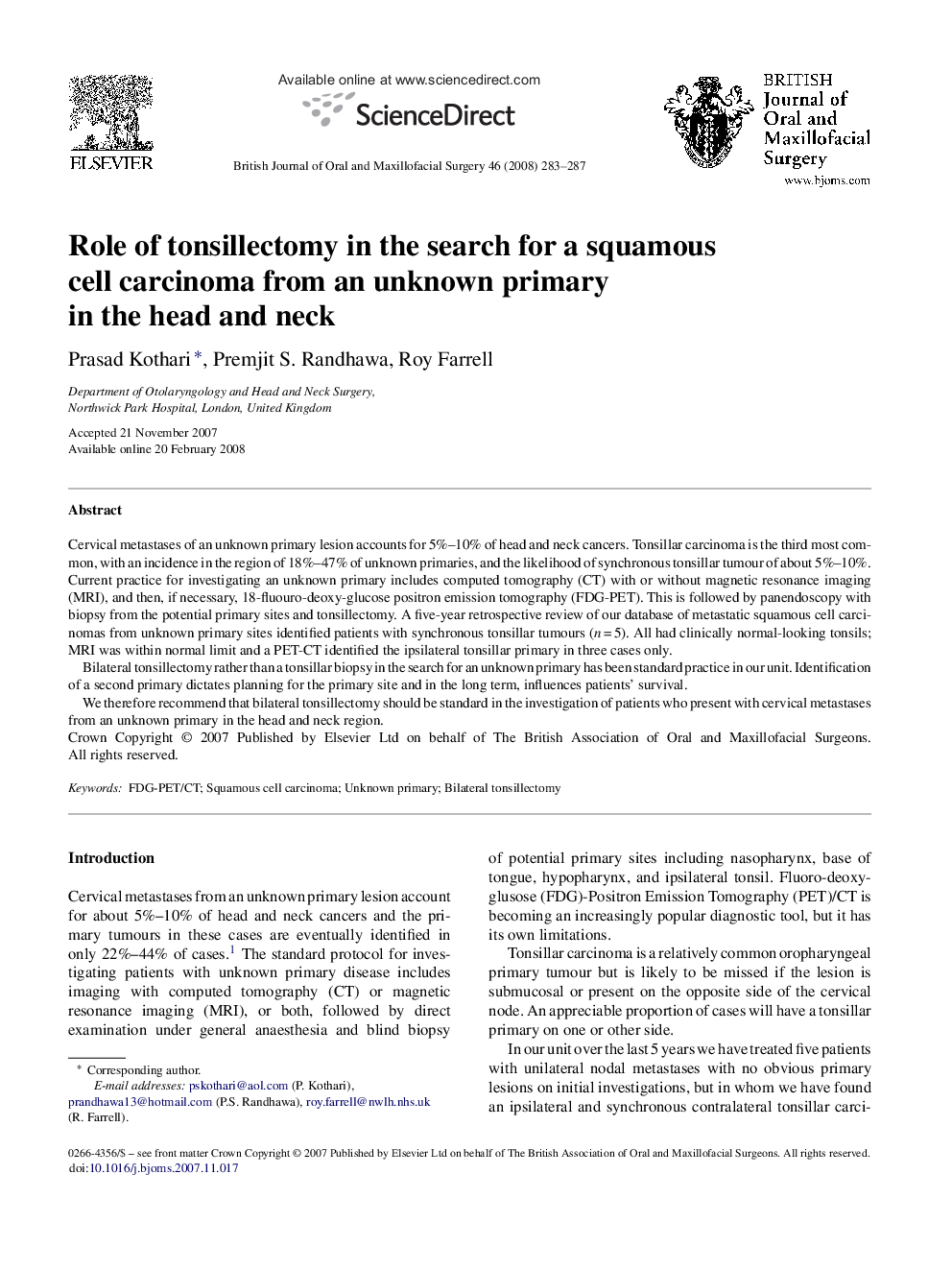| Article ID | Journal | Published Year | Pages | File Type |
|---|---|---|---|---|
| 3125355 | British Journal of Oral and Maxillofacial Surgery | 2008 | 5 Pages |
Cervical metastases of an unknown primary lesion accounts for 5%–10% of head and neck cancers. Tonsillar carcinoma is the third most common, with an incidence in the region of 18%–47% of unknown primaries, and the likelihood of synchronous tonsillar tumour of about 5%–10%. Current practice for investigating an unknown primary includes computed tomography (CT) with or without magnetic resonance imaging (MRI), and then, if necessary, 18-fluouro-deoxy-glucose positron emission tomography (FDG-PET). This is followed by panendoscopy with biopsy from the potential primary sites and tonsillectomy. A five-year retrospective review of our database of metastatic squamous cell carcinomas from unknown primary sites identified patients with synchronous tonsillar tumours (n = 5). All had clinically normal-looking tonsils; MRI was within normal limit and a PET-CT identified the ipsilateral tonsillar primary in three cases only.Bilateral tonsillectomy rather than a tonsillar biopsy in the search for an unknown primary has been standard practice in our unit. Identification of a second primary dictates planning for the primary site and in the long term, influences patients’ survival.We therefore recommend that bilateral tonsillectomy should be standard in the investigation of patients who present with cervical metastases from an unknown primary in the head and neck region.
